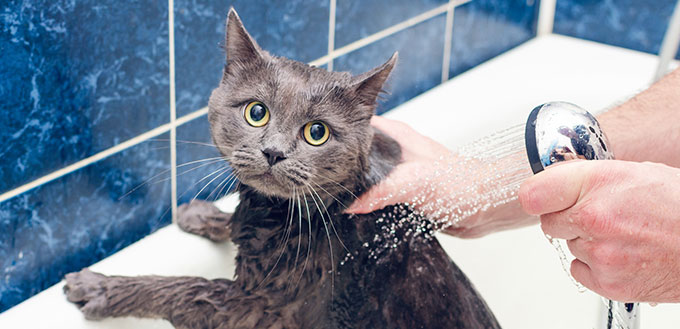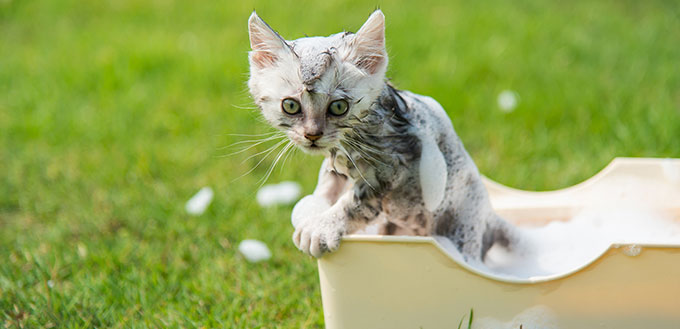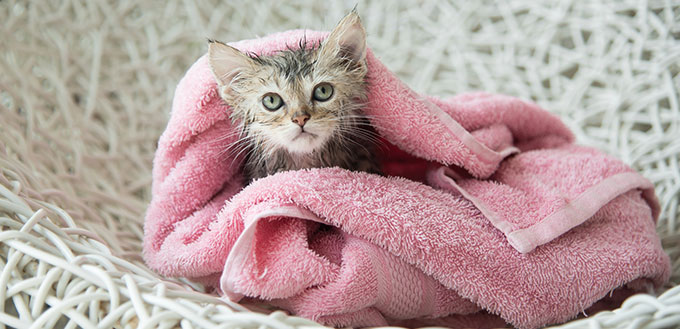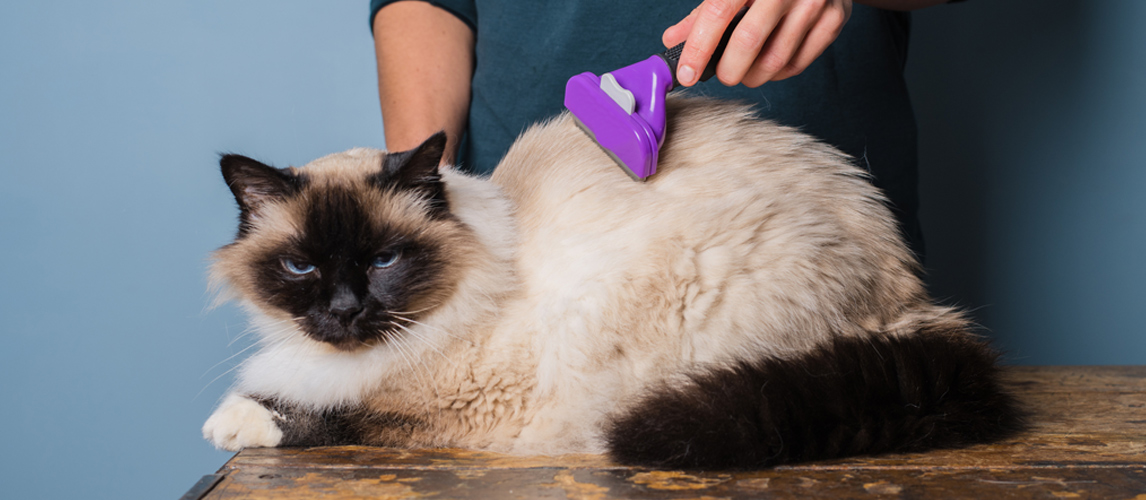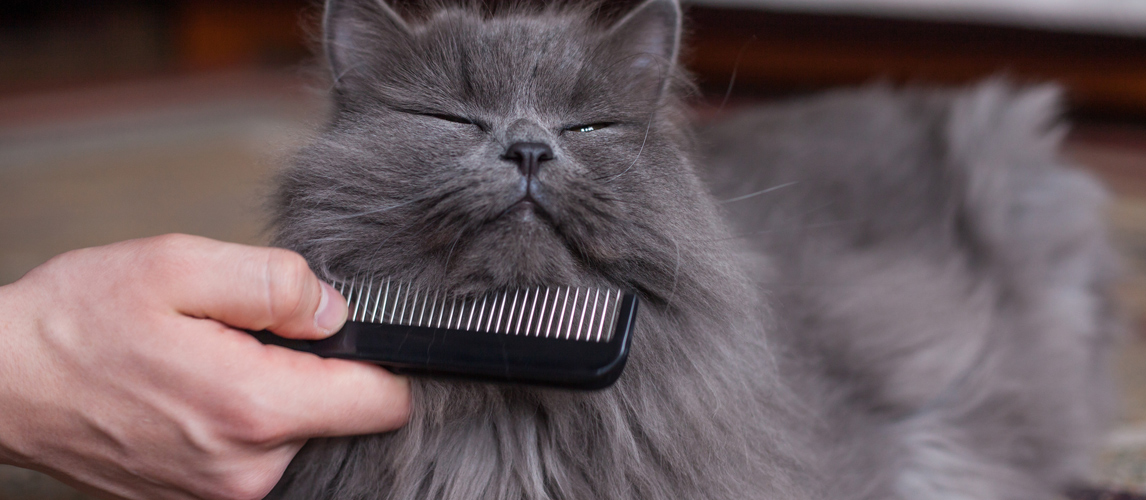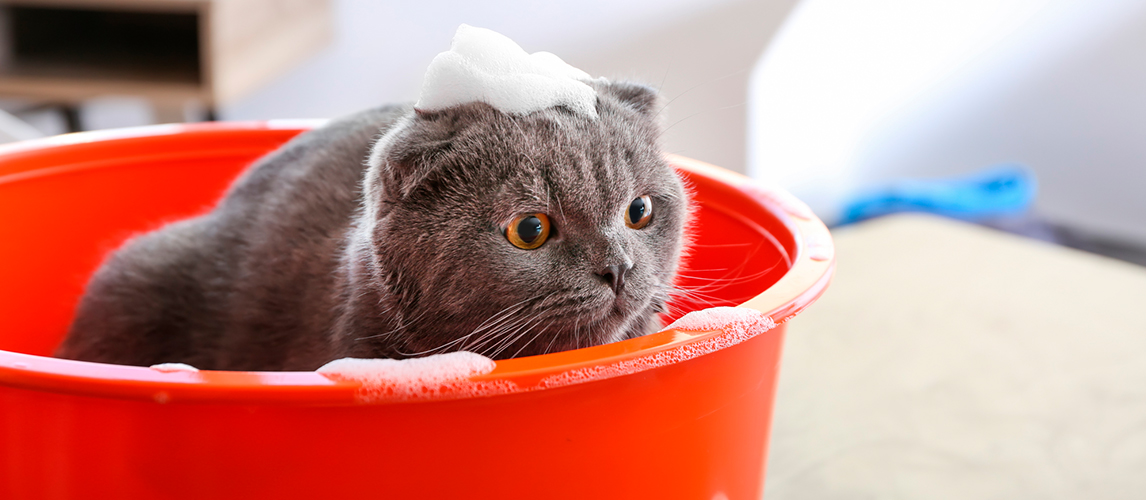Hygiene is incredibly important for all animals. Having good hygiene isn’t just about smelling fresh and looking great, it is also imperative for good health. For cats, plaque left on teeth, discharge left in ears, and dirt brought in from outside can all cause infections, diseases and other health problems. But how necessary is bathing as part of your cat’s hygiene routine? Many cats hate being bathed, so it can be a real struggle to give them a bath. It can even be dangerous if your kitty lashes out and scratches you. So, what is the best way to bathe your cat? Can you avoid getting scratched?
Does Your Cat Need a Bath?
The first thing to consider when bathing a cat is ‘Does my cat even need a bath?’. While hygiene is very important, bathing is not the only way to ensure your cat has a good level of hygiene, and there are a number of ways cats clean themselves in the wild. Hygiene needs are determined by a number of factors, including breed, health and lifestyle. Just as it is important to keep your cat clean to support good health, it is important not to over-bathe your cat as it can cause skin issues.
Healthy, short-haired cats who stay indoors are likely to be sufficiently self-grooming. This would mean bathing only needs to occur rarely, maybe once a year or when they are particularly dirty or smelly. However, long-haired breeds will need more grooming care, which can include more regular bathing, as can outdoor cats who spend lots of their time exposed to a wider range of dirt, bacteria, fungi, and other potential hazards. Cats with health issues often also struggle to self-groom, which will require more frequent bathing. Of particular note are obese cats and old cats, who often struggle to reach their lower regions for cleaning, as well as cats with joint, pain and mobility issues.
You may think it is safest to bathe your cat as often as you can, but, unfortunately, bathing your cat too often can be similarly problematic. Frequent, unnecessary bathing will dry out their skin. This can cause flaky skin as they lose the essential oils that keep their skin and coat healthy. This kind of irritated skin is the most common symptom of over-bathing, along with hair loss. However, you can also check for:
- Redness
- Rashes
- Irritability
- Excessive grooming, perhaps as a means of soothing
- Excessive scratching
How to Wash a Cat
First and foremost, if you are going to give your cat a bath, you need to know how to wash your cat. Keeping your cat clean between baths mostly means letting them groom themselves. Remember to check they are grooming well and reaching every area, including their hind area. On top of their self-grooming, make sure to:
- Brush them to get rid of excess oil, and loose or matted fur
- Trim their claws
- Wipe their ears
- Regularly wipe them with a warm, damp washcloth
Bathing your cat can be simple, so here is a basic step-by-step guide:
- Run a cat bath in a sink or tub. You only need a couple of inches, and use water that approximately matches their body temperature.
- Place your cat in by holding them by the scruff. Hold them gently but securely to stop them from trying to escape. Your bathroom door should also be shut to help keep them inside the room.
- Wet their fur using whatever appliance is most comfortable for your cat. This may be a cup or a shower head. Apply shampoo. Only use the best cat shampoo and never use human shampoo. It is likely to be toxic. Massage the shampoo into the fur, and avoid the eyes and ears.
- Rinse the fur thoroughly. Leaving shampoo residue will dry out and irritate their skin.
- Stroke their fur firmly to remove excess water, and then wrap them in a dry towel. Wrap them tightly to keep them warm, and pick them up to soothe them. Once the towel is removed, make sure they are in a warm environment as water will lower their body temperature faster than air. Only use a blow dryer if you are confident that you will not burn their very sensitive skin. You should use the lowest setting, and keep the dryer far from their skin.
The Best Way to Bathe a Cat
Now you have a good idea about how to bathe a cat, you may want to know some tips and tricks for giving your cat a bath. For many cat owners, dreading bath time is a crucial reason for putting off necessary baths, which can cause poor hygiene levels. These tips should help you avoid scratches, messes and the general misery of making a cat do something they don’t want to do.
- Cut their claws
Sometimes the most obvious solutions are the hardest to find. If scratching is your number one concern, try scheduling your cat’s regular nail trim for just before their bath. As always, cut their claws with a cat claw clipper, and do not cut too close to the pink, fleshy parts of their paw. You can also gently file the nail to be certain there are no sharp or jagged edges, but you should consider whether your cat needs those nails. Outdoor cats, for example, may need claws for defence or for climbing to escape dangerous situations. If your cat hates trimming its nails even more than it hates baths, you may want to consider asking your vet or a professional groomer do this for you a few days before the bath. For some cats, nail trimming will put them in a bad mood, which will make bathing harder, not easier.
- Reward your cat
Positive reinforcement can make all the difference when it comes to getting your cat used to baths. It is possible to train your cat not to hate bathing, and it mostly involves positively associating baths and water with treats. Simply give your cat their favorite cat treat as a reward immediately following the bath. Your cat may be thinking that the bath is a punishment, so you have to convince them it is a good experience. As your cat may have ingested hair during the grooming process, you can consider offering them special ‘hairball treats’. Their high concentrations of fat or fish oil sticks to ingested fur so that it passes through their digestive system better.
- Start young
Where possible, get your cat used to water and baths as a kitten. This will make bath time easier all throughout their life. While cats are famous for hating water, there are plenty of cats who don’t, and this usually comes due to positive associations from an early age. This may not be possible if you are adopting an adult cat. Remember that rescue cats may have difficult personal histories. If your new rescue cat reacts to water with extreme fear or anxiety, consider seeking the advice of a vet or behaviorist. They should be able to advise you about reconditioning their negative associations or provide you with hygiene solutions that avoid baths completely.
- Get help
In addition to seeking advice if you suspect your cat is quite severely scared of water, you can also seek the help of a professional groomer. As many cats only need bathing once or twice a year, having a professional do it can be reasonably affordable. They will have the best equipment and experience to get the job done easily and comfortably for your pet. Similarly, bathing your cat at home can be made considerably easier if you have a little help from a family member or friend. One of you can hold and soothe the cat, while the other cleans.
- Keep them calm
The best way to make bath time manageable is to have a cat that is in the right mood. This means they aren’t terrified or anxious, and they aren’t playful or excitable. Avoid stressful activities, such as vacuuming, as well as playtime and other activities that will make them energetic. If possible, spend some quality, calm time with them before the bath. Brush them, stroke them and hold them to help them have a peaceful mindset. Introduce the bath to them slowly and gently, and talk to them throughout the process in soothing tones.
How to Bathe a Cat That Hates Water
Cats that hate water are particularly difficult to bathe. If you want to know how to give a cat a bath when they are scared of water, there are a few options for you:
- Recondition your cat not to hate water. This may require help from a professional behaviorist. It will take time, but can be the best way to make bathing your cat easy and convenient.
- Pay a professional groomer to clean your cat. This is may not be possible if your cat needs frequent baths because of the cost, but if you can afford it, it can be a convenient way of getting a number of grooming procedures done.
- Discuss alternative hygiene routines with a vet. It is possible your cat does not need to have a bath even once a year if they are a healthy short-hair. Wiping your cat regularly with a wet cloth, regular brushing and supporting their self-grooming techniques may be enough to keep your cat healthy. This won’t be the case for most cats, however, so make sure to consult your plans with your vet.
More Pet Product Reviews
Cat Ear Cleaners
Cat Toothbrush
Flea Comb for Cats
Cat Grooming Gloves
Cat Toothpaste
Nail Caps for Cats
Cat Nail Clippers
Brush For Cats
Cat Shampoos
Sources:
- Alison Diesel, Proper Pet Hygiene, Texas A&M College of Veterinary Medicine & Biomedical Sciences
- Give Your Kitten A Bath With These Simple Tips, Animal Humane Society
- Cat-Care Tips, HowStuffWorks
- Cat Foster Care Manual, Best Friends Animal Society


